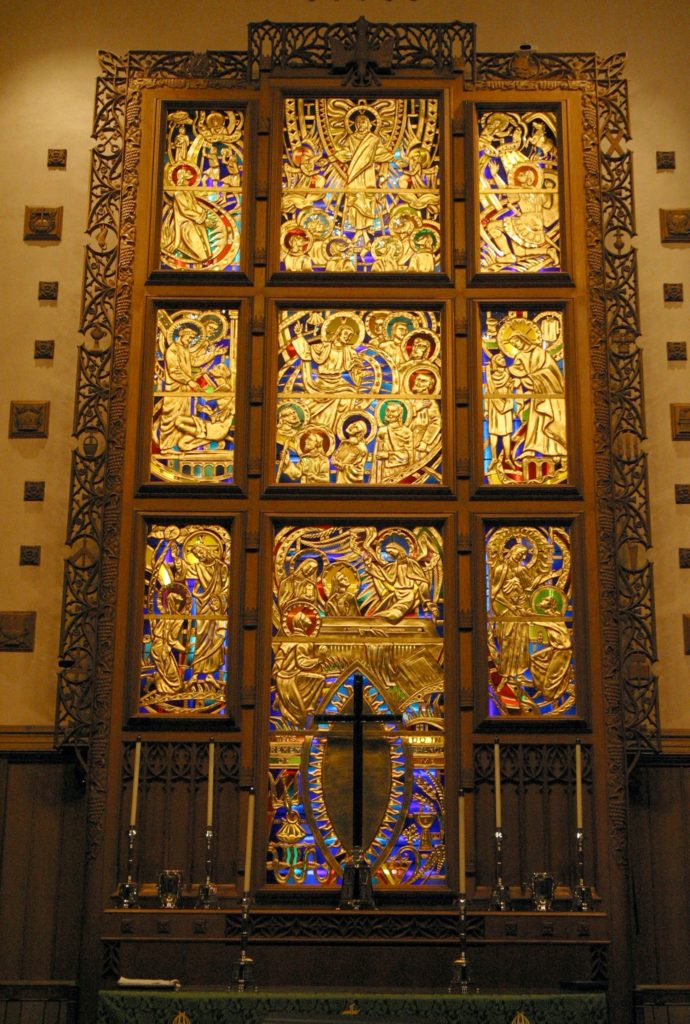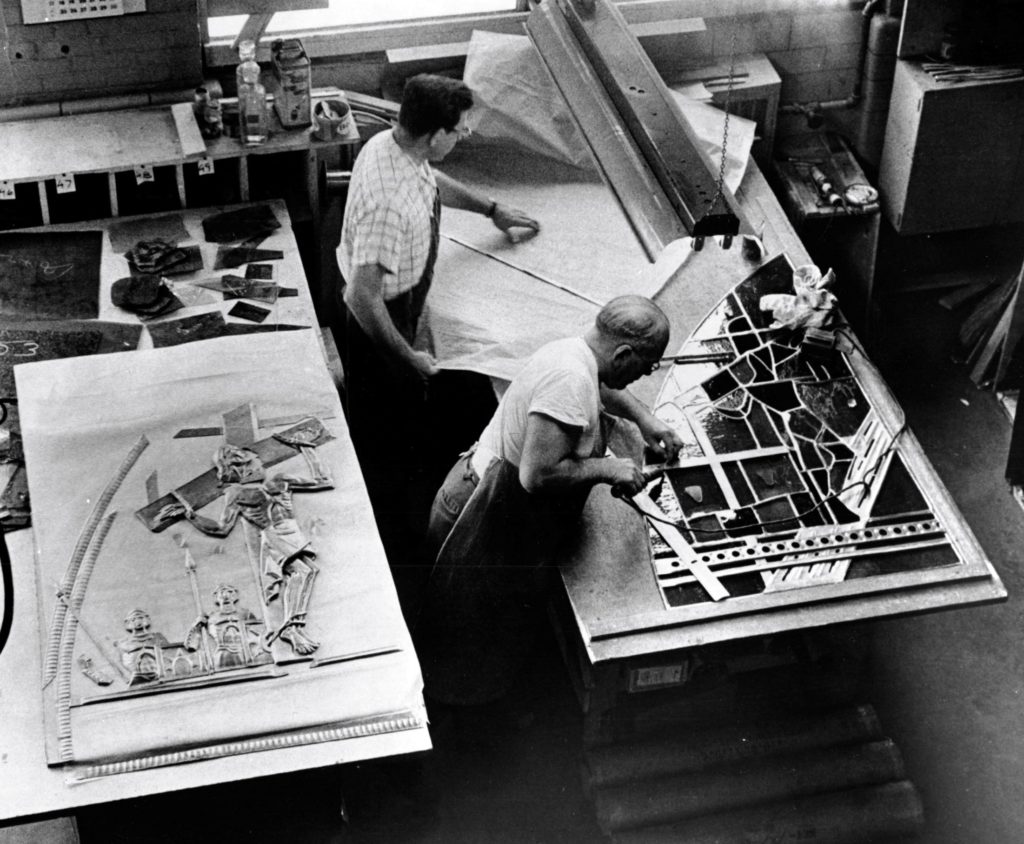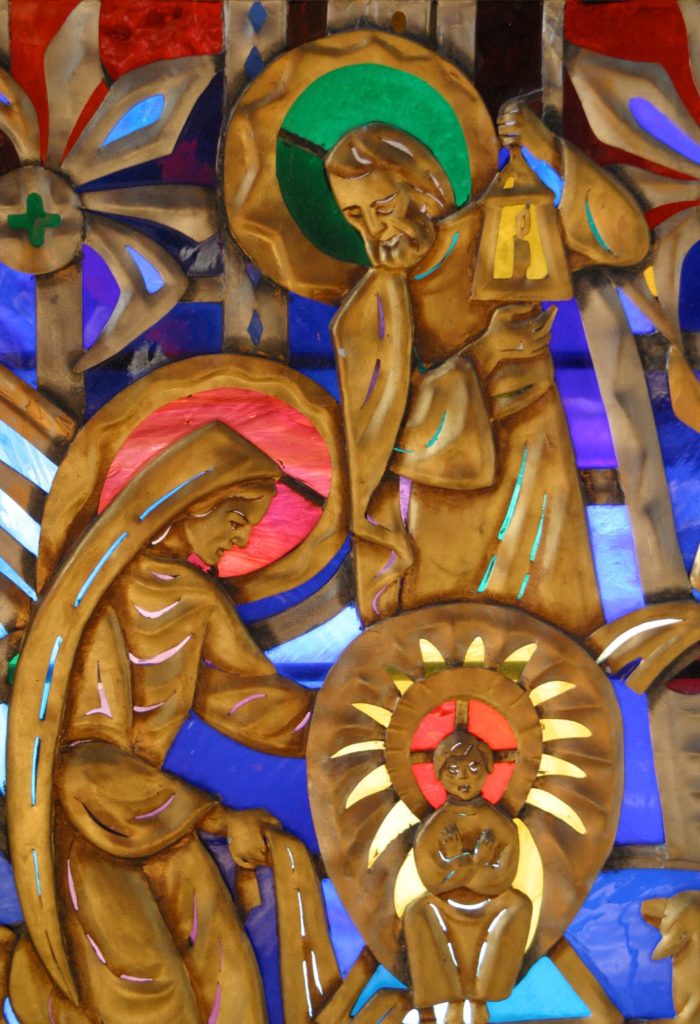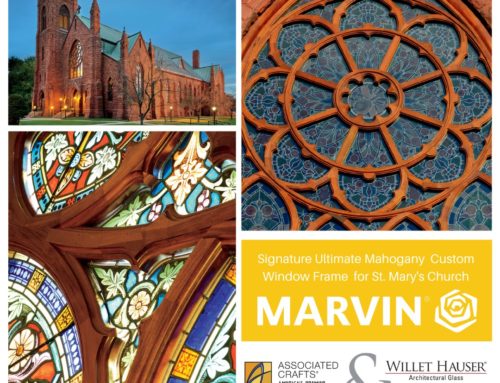While stained glass windows have been illuminating churches and cathedrals for centuries, it has one minor downside. At night, those beautiful colored glass windows don’t shine like we’d want them to. That’s why, in the 1950s Henry Lee Willet developed an amazing, exclusive technique – sculptured gold!
Previously on the blog we’ve looked at gold leaf in sculptures in architecture, including a mention of sculptured gold, but we want to really dial in our focus on just that this time.
Sculptured Gold – An Exquisite Art

Sculptured Gold Window, Myers Park Presbyterian Church, Charlotte, NC, 1960
Sculptured gold is, perhaps, one of the finest offerings we’ve produced here at the Willet Hauser® & Associated Crafts® stained glass studio. Developed by Henry Lee Willet in the 1950s, the technique was developed specifically to create a window that is beautiful under any lighting. In daylight, the sun shines bright through the stained glass, casting the gorgeous colored light throughout the interior. In the evenings, when the sky is dark and no light can shine through, the glass appears dark. This is when the sculptured gold truly shines (forgive the pun!). The interior lighting hits the sculptured gold and displays radiant golden forms. It’s beautiful and must be seen to be understood.
How Does Sculptured Gold Work?
Henry Lee Willet dreamed up this process with incredible craftsmanship and special care, bringing together two different crafts to create one beautiful piece – the ancient medium of metal sculpture, called repoussé, and the craft of stained glass.
Fabricating a sculptured gold piece began with the traditional leaded stained glass window process, with glass cut according to a design and fitted together with lead came. Separately, using precise tools, sheet lead was hammered into a low relief sculpture, forming figures and designs into a three-dimensional overlay. Once the piece was completed, the sculptured sheet was laid atop the leaded glass panel. Studio artists then covered the entire lead and sculptural design in precious 23-karat gold leaf! In some rare instances, platinum was used as well! Once the gold leaf process was complete, the window was ready for installation and viewing – no matter what time of day!
Eventually, this process was adapted, using faceted stained glass set in epoxy resin. The angular glass work gave even more brilliance to the color seen in daylight.
History of Sculptured Gold

This bird’s eye view shows artisans creating a sculptured gold window. At left is the sculptured lead overlay and at right, the traditional leaded stained glass panel, c. 1960s.
Sculptured Gold Beginnings, Expansion, and Decline
As mentioned, the exclusive process made up of several different techniques was developed in the 1950s, by Henry Lee Willet. He had been working on the idea of creating a window that was beautiful at all hours of the day, under any lighting conditions for years. During the 50s his experiments in the craft created the first sculptured gold window for the Westwood United Methodist Church in Los Angeles, California. After this first window, it was clear – sculptured gold was the solution to the eternal problem of stained glass windows losing their beauty at night!
Over the following years, hundreds of sculptured gold pieces were installed throughout the country! The process was adapted using the new faceted glass and epoxy styles and it flourished for a time.
As time went on, the cost of gold rose, making it prohibitively expensive for people to want to install them in their buildings. As the demand for sculptured gold windows fell, the gold shop was regretfully closed and no new sculptured gold windows were produced.

Detail of a Sculptured Gold Window, Methodist Chapel at the University of Illinois, Urbana, IL, 1960
If you’d like to know more about the art behind our beautiful windows, head over to our Video Gallery and see the process in action! If your church, cathedral, temple, or commercial building needs stained glass repair, restoration, or a brand new creation – give us a call! Our expert artists and craftsmen are here to work with you and create your stunning piece of art!





